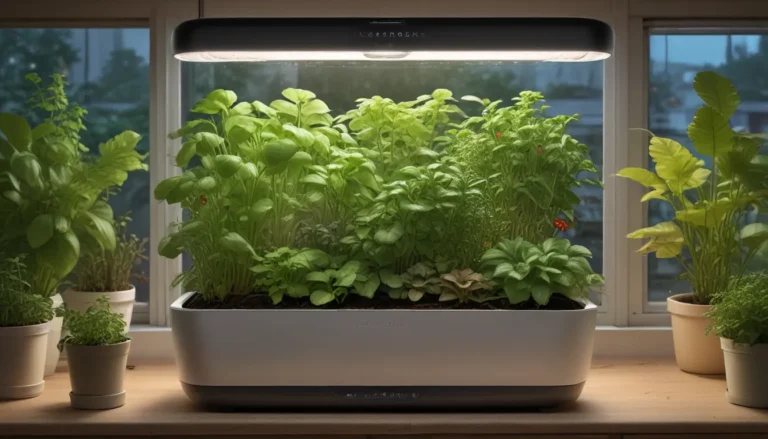The Ultimate Guide to Pruning Clematis Vines for Abundant Flowers

Clematis vines are not only beautiful but also easy to care for, making them a popular choice among gardeners. Pruning these vines is a crucial step in ensuring they produce copious blooms each year and maintain healthy growth. Whether you have early spring, repeat summer, or late summer and fall flowering clematis, proper pruning techniques can make a big difference in their blooming performance.
In this comprehensive guide, we will delve into the world of clematis pruning, discussing the different groups, pruning schedules, and general tips to promote flowering. Let’s explore how to prune clematis vines for abundant flowers together!
Understanding Clematis Pruning
Before we dive into the specific pruning techniques for each clematis group, let’s understand the basics of clematis pruning. There are three main groups of clematis based on their flowering patterns:
- Early Spring Flowering: These varieties bloom in late winter or early spring.
- Repeat Summer Flowering: These clematis bloom first on old wood in late spring or early summer and then on new wood in mid to late summer.
- Late Summer and Fall Flowering: Vines in this group flower in late summer and early autumn on new growth.
Now, let’s discuss the pruning techniques for each group, starting from first-year care all the way to maintaining mature plants.
First-Year Care
In the first year after planting, it is recommended to cut back all clematis vines to six to 12 inches in late winter. While this may result in the loss of flowers in the first full growing season, it promotes the growth of strong, multi-stemmed plants with buds low on the stems.
For Group 1 and Group 2 clematis, which bloom on old wood, sacrificing a season’s flowers can be challenging emotionally. However, it’s essential for ensuring robust plants with blossoms and leaves from top to bottom. On the other hand, Group 3 vines, which bloom on new wood, require a hard cut back every year, so their flowering performance isn’t affected by pruning.
Second-Year Care
In the second year, consider cutting back the vines to a height of about three feet, leaving a section of old wood in place. This strategy promotes the development of more stems with bushier growth, resulting in more flowers in the long run.
Third-Year Care and Beyond: The Three Groups
After the initial pruning in the first and second years, follow specific guidelines for each clematis group as detailed below:
Early Spring Flowering
- Clematis Group 1: These early varieties that bloom in late winter or early spring require no pruning for flower production. However, light cleanup and occasional trimming may be necessary to tidy up plants. Popular Group 1 species include Clematis alpina, C. armandii, C. macropetala, and C. montana.
Repeat Summer Flowering
- Clematis Group 2: The showy and large-flowered varieties of summer fall under this group, blooming first on old wood and then on new wood. Light grooming in late winter followed by deadheading spent blooms helps promote reblooming for Group 2 clematis.
Late Summer and Fall Flowering
- Clematis Group 3: Vines in this group flower on new growth and require a hard cut back in late winter. Some popular Group 3 varieties include C. tangutica, C. texensis, and C. viticella.
General Pruning Tips to Promote Flowering
Here are some general pruning tips to ensure abundant growth and blooming for your clematis vines:
- Identify the group to which each clematis vine belongs and follow the appropriate pruning guidelines.
- Use clean, sharp garden shears for pruning to protect vines from damage and infection.
- Have trellising or other supports in place for new growth to cling to.
- Cut stems in late winter just above a set of healthy leaf buds.
- Deadhead spent flowers promptly to encourage reblooming.
- Prune mature vines that show signs of reduced vitality after flowering to promote renewed growth.
Conclusion: Blooming Beauties
Clematis vines are a delightful addition to any garden, offering beautiful flowers and lush foliage with the right care and pruning techniques. By following the guidelines for each clematis group and adopting proper pruning practices, you can ensure that your vines produce copious blooms every year.
Remember, timing is crucial when pruning clematis vines, so be sure to coincide your trimming with new growth emergence for best results. Share your experiences with clematis pruning and how you enjoy these showy vines in the comments below. For further insights into cultivating clematis, check out our related guides:
- The Complete Clematis Growing Guide
- How to Grow Clematis in Containers
- Guide to Clematis Winter Care: Protect Your Vines from Freezing and Frost
With a little bit of pruning know-how, you can transform your clematis vines into vibrant, blooming beauties that will enhance your outdoor spaces for years to come. Happy pruning!





